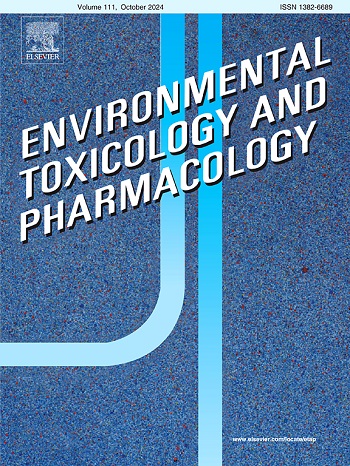Calcitriol/vitamin D receptor system alleviates PM2.5-induced human bronchial epithelial damage through upregulating mitochondrial bioenergetics in association with regulation of HIF-1α/PGC-1α signaling
IF 4.2
3区 环境科学与生态学
Q2 ENVIRONMENTAL SCIENCES
引用次数: 0
Abstract
PM2.5 exposure causes lung injury by triggering oxidative stress, mitochondrial dysfunction, and modulating HIF-1α signaling. Calcitriol activates VDR, which regulates cellular homeostasis. This study evaluated the protective role of the calcitriol/VDR system in PM2.5-induced damage to BEAS-2B bronchial epithelial cells by reducing oxidative stress, upregulating mitochondrial bioenergetics, and downregulating HIF-1α. We found that the calcitriol/VDR system decreased ROS formation and restored mitochondrial bioenergetics in PM2.5-treated cells. This improvement correlated with reduced HIF-1α nuclear translocation and increased PGC-1α protein and mitochondrial gene expressions. This study is the first to suggest that targeting the calcitriol/VDR system could be a promising pharmacological strategy for mitigating PM2.5-induced lung epithelial damage by promoting mitochondrial bioenergetics and regulating PGC-1α and HIF-1α signaling.
骨化三醇/维生素D受体系统通过上调线粒体生物能与调节HIF-1α/PGC-1α信号传导,减轻PM2.5诱导的人类支气管上皮损伤。
PM2.5 暴露会引发氧化应激、线粒体功能障碍和 HIF-1α 信号调节,从而造成肺损伤。钙三醇能激活VDR,而VDR能调节细胞稳态。本研究评估了降钙素三醇/VDR系统在PM2.5诱导的BEAS-2B支气管上皮细胞损伤中通过降低氧化应激、上调线粒体生物能和下调HIF-1α所起的保护作用。我们发现,钙三醇/VDR 系统减少了 ROS 的形成,恢复了 PM2.5 处理细胞的线粒体生物能。这种改善与 HIF-1α 核转位减少、PGC-1α 蛋白和线粒体基因表达增加有关。这项研究首次提出,靶向钙三醇/VDR系统可以通过促进线粒体生物能并调节PGC-1α和HIF-1α信号传导,成为减轻PM2.5诱导的肺上皮损伤的一种有前景的药理学策略。
本文章由计算机程序翻译,如有差异,请以英文原文为准。
求助全文
约1分钟内获得全文
求助全文
来源期刊
CiteScore
7.00
自引率
4.70%
发文量
185
审稿时长
34 days
期刊介绍:
Environmental Toxicology and Pharmacology publishes the results of studies concerning toxic and pharmacological effects of (human and veterinary) drugs and of environmental contaminants in animals and man.
Areas of special interest are: molecular mechanisms of toxicity, biotransformation and toxicokinetics (including toxicokinetic modelling), molecular, biochemical and physiological mechanisms explaining differences in sensitivity between species and individuals, the characterisation of pathophysiological models and mechanisms involved in the development of effects and the identification of biological markers that can be used to study exposure and effects in man and animals.
In addition to full length papers, short communications, full-length reviews and mini-reviews, Environmental Toxicology and Pharmacology will publish in depth assessments of special problem areas. The latter publications may exceed the length of a full length paper three to fourfold. A basic requirement is that the assessments are made under the auspices of international groups of leading experts in the fields concerned. The information examined may either consist of data that were already published, or of new data that were obtained within the framework of collaborative research programmes. Provision is also made for the acceptance of minireviews on (classes of) compounds, toxicities or mechanisms, debating recent advances in rapidly developing fields that fall within the scope of the journal.

 求助内容:
求助内容: 应助结果提醒方式:
应助结果提醒方式:


